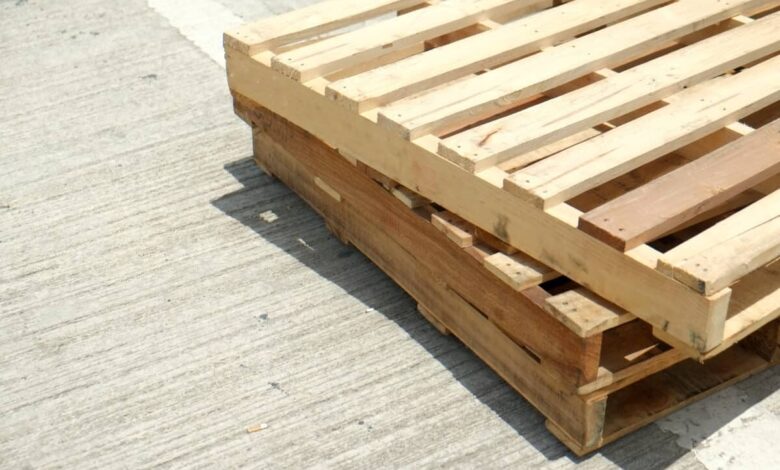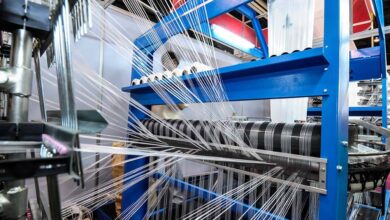Exploring the Different Types of Pallets Used in the Logistics Industry

When you walk into any warehouse or shipping facility, you’ll notice wooden platforms stacked with goods everywhere. These are pallets, and they’re the backbone of modern logistics. Without them, moving products from factories to stores would be much harder and more expensive.
What Exactly Are Pallets?
A pallet is simply a flat platform used to support goods while they’re being moved or stored. Think of it as a sturdy foundation that lets forklifts and other equipment easily pick up and transport multiple items at once. Instead of moving boxes one by one, workers can move entire loads in a single trip.
Wood Pallets: The Classic Choice
Wood pallets are by far the most common type you’ll see. They’re made from various types of wood, including pine, oak, and poplar. These pallets are popular because they’re relatively cheap to make and can handle heavy loads.
The main benefits of wood pallets include their strength and the fact that they can be repaired easily. If a board breaks, you can simply replace it. They also work well in most climates and can be recycled or turned into other wood products when they’re no longer useful.
However, wood pallets do have some drawbacks. They can splinter, harbor bacteria, and are susceptible to pests. They also absorb moisture, which can cause problems in certain industries.
Plastic Pallets: The Modern Alternative
Plastic pallets have gained popularity in recent years, especially in industries that need extra cleanliness. These pallets are made from various types of plastic, including high-density polyethylene (HDPE) and polypropylene.
The biggest advantage of plastic pallets is their cleanliness. They don’t absorb liquids, resist bacteria, and are easy to wash. This makes them perfect for food, pharmaceutical, and chemical industries. They’re also lighter than wood pallets and last much longer.
The downside is cost. Plastic pallets are more expensive upfront, though they often pay for themselves over time through durability and reusability.
Metal Pallets: Built to Last
Metal pallets, usually made from steel or aluminum, are the strongest option available. They can handle extremely heavy loads and harsh conditions that would destroy other types of pallets.
These pallets are commonly used in industries like automotive, aerospace, and heavy machinery. They’re fireproof, pest-resistant, and can be used in extreme temperatures. Steel pallets are incredibly strong but heavy, while aluminum pallets offer strength with less weight.
The main drawback is cost and weight. Metal pallets are expensive and, in the case of steel, quite heavy to handle.
Paper and Cardboard Pallets: The Lightweight Option
Paper pallets might sound fragile, but modern versions are surprisingly strong. They’re made from compressed paper or corrugated cardboard and can handle moderate loads.
These pallets are popular for one-way shipments because they’re lightweight and don’t need to be returned. They’re also completely recyclable and much cheaper than other options. Many companies use them for air freight because every pound matters when shipping by plane.
However, they’re not suitable for heavy loads or wet conditions, and they can’t be reused as many times as other pallet types.
Composite Pallets: The Best of Both Worlds
Composite pallets combine different materials to create something better than the sum of their parts. They might mix wood fibers with plastic, or combine paper with other materials.
These pallets try to capture the benefits of different materials while minimizing the drawbacks. For example, a wood-plastic composite might be stronger than pure plastic but more moisture-resistant than pure wood.
Choosing the Right Pallet for Your Needs
The type of pallet you choose depends on several factors:
Weight Requirements: How heavy are your products? Metal pallets handle the heaviest loads, while paper pallets work for lighter items.
Hygiene Needs: Food and pharmaceutical companies often prefer plastic pallets because they’re easier to clean and sanitize.
Budget Considerations: Wood pallets are usually the cheapest option upfront, while plastic and metal cost more initially but may save money over time.
Shipping Method: Air freight benefits from lightweight pallets, while ocean shipping can handle heavier options.
Environmental Conditions: Will your pallets face moisture, extreme temperatures, or chemicals? Some materials handle these conditions better than others.
The Role of Quality Suppliers
Getting the right pallets for your operation means working with reliable suppliers who understand your specific needs. Companies like Sincere Pallet specialize in providing various pallet types and can help businesses choose the best option for their particular situation.
A good pallet supplier will consider your industry, shipping requirements, budget, and any special conditions your pallets might face. They can also provide guidance on pallet maintenance and replacement schedules.
Looking Ahead: The Future of Pallets
The pallet industry continues to evolve. New materials and designs are being developed to make pallets stronger, lighter, and more environmentally friendly. Some companies are experimenting with biodegradable materials, while others are creating smart pallets with tracking technology built in.
Sustainability is becoming increasingly important, with more businesses looking for pallets that can be easily recycled or that have a smaller environmental footprint throughout their lifecycle.
Making the Right Choice
Pallets might seem like a simple part of logistics, but choosing the right type can significantly impact your operation’s efficiency and costs. Wood pallets remain the standard for many applications, but plastic, metal, and alternative materials each have their place in modern logistics.
The key is understanding your specific needs and working with knowledgeable suppliers who can guide you toward the best solution. Whether you’re shipping delicate electronics, heavy machinery, or food products, there’s a pallet type designed to meet your requirements safely and cost-effectively.
By taking the time to understand the different options available, businesses can make informed decisions that improve their logistics operations while potentially saving money and reducing environmental impact.




